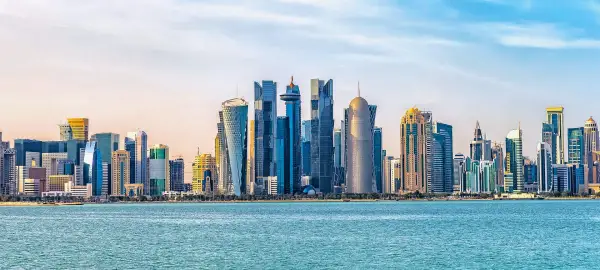Tourcode: GS9
- Overview
- Info & Inclusions
- Itinerary
- Map & Hotels
- Photos
- Dates & Prices
- Max Group Size 18
- Explore ancient treasures in the Arab Gulf
- Discover Oman's stunning natural beauty
- Marvel at Abu Dhabi's grandeur and Dubai's soaring heights in the UAE
- Uncover 5,000-year-old forts and burial mounds in Qatar and Bahrain
- Experience Saudi Arabia's unique, off-the-beaten-track adventure
- Singles friendly (view options for single travellers)
- MealsSavour authentic flavours with included daily breakfasts and most dinners at handpicked local restaurants—immersing you in local cuisine without worrying about reservations or budgets.
- Transport & Logistics
Private air-conditioned coaches and included internal ferries and flights—ensuring hassle-free travel so you can focus entirely on the discoveries ahead.
"Adventures Abroad tour leader's management and guest services managed the tour with great skill and dedication. The tour leader was on top of every move and transfer. We have not experienced any issues with logistics and had a great time."
~ JULIA O"The tour leader did an excellent job coordinating some difficult travel logistics, power outage issues and resolving problems and dealing with guests who had unrealistic expectations."
~ CYNTHIA COLLINS - Expert Guidance
Unlock insider secrets at every landmark with your full-time Tour Leader and expert local guides , all gratuities covered—no hidden tipping surprises—so you immerse fully in your destination's stories, worry-free. (Except for the tips to your tour leader at the end of your tour.)
"Amazing tour guide. Our tour guide was very well organized, Her passion, knowledge, and enthusiasm completely transformed the travel experience into something truly unforgettable..."
~ MELANIE LEMAIRE"Highly recommend every trip with Adventures Abroad. It's a well organized and well thought out adventure. The tour leaders are friendly, knowledgeable and experienced professionals. Highly recommend this company."
~ SUSAN WALL - Sightseeing & EntrancesAll entrance fees for sites visited as per the itinerary—no hidden costs—so you can explore ancient ruins and excursions with complete peace of mind.
- AccommodationsUnwind in clean, well-located 3 to 4-star hotels with private en suite facilities—handpicked for comfort and convenience after each day's discoveries—so you can rest easy knowing your stay supports the real adventure, not steals the spotlight.
- Small Group
Discover the world in small groups of up to 18 travellers plus your expert Tour Leader—unlocking spontaneity, off-the-beaten-path adventures, and genuine connections at a relaxed pace, free from crowds.
"Looking Forward to My Next Adventure The best feature of the Adventures tour was the small size that allowed the group to quickly load up, let everyone get acquainted within the first 24 hours, capitalize on unplanned surprises along..."
~ PHILIP BLENSKI"Good value for a great time I have traveled with Adventures Abroad for over 20 years now. Well thought out, interesting itineraries and the other travelers congenial and friendly. The price always seems fair and overall a..."
~ Trusted Customer - Airport Transfers For Land & Air CustomersWe handle hassle-free airport transfers for all our land and air tour customers—plus early arrivals or late departures when you book extra hotel nights directly with us for added peace of mind.
- International airfare to/from the tour.
- Tour Leader gratuities, most lunches, some dinners (refer to itinerary) drinks, personal items (phone, laundry, etc), international (if applicable) and domestic air taxes, and any excursions referenced as 'optional'.
- Airport transfers for Land Only customers.
- Optional trip cancellation insurance.
- Our post-reservation trip notes offer further guidance on not included meals, visas/entry fees, and locally-paid departure taxes.
- Seasonality and Weather:
The Arab Gulf States generally have a hot desert climate, characterized by very little rainfall and high temperatures throughout the year.
In January, visitors can expect mild winter weather, with average temperatures ranging from 15C (59F) to 25C (77F) during the day. Nights can be cool, especially in the desert regions, with temperatures sometimes dropping to around 5C (41F).
Visiting the Arab Gulf States and Saudi Arabia in January is like experiencing a pleasant winter wonderland, without the snow. The mild weather makes it an ideal time to explore the region's outdoor attractions, such as historic forts, mosques, and traditional souks.
In early November, the weather is usually warm, with average daytime temperatures ranging from 25C (77F) to 30C (86F). Nights are still pleasant, with temperatures around 15C (59F) to 20C (68F).
Visiting the Arab Gulf States and Saudi Arabia in early November is like experiencing a warm and sunny autumn. The weather is ideal for outdoor activities, such as exploring historic sites, taking a traditional dhow cruise, or simply enjoying the local cuisine and hospitality. - Transport and Travel Conditions:
Ground transport provided by private air-conditioned motor coach, 12-36 seats depending on ultimate group size. The tour is not strenuous though it is busy; you must be steady on your feet and be able to endure some heat and long travel days. We have numerous walking tours and visit several sites that are LARGE with steps and uneven surfaces. You must be independent with your own luggage at airports.
Our difficulty rating level 2 refers to the ambitious nature of the itinerary and the lots of moving around that we do. Some days are long and we may have some early starts. Some mountain roads are also winding and rough and, although we use sturdy 4x4 vehicles for some of these journeys, it can be slow going; those sensitive to motion may be affected.
Customs & Norms: Saudi Arabia has relaxed its restrictions for foreign women visiting the country. Though your dress and overall appearance must be conservative, with shoulders, arms and legs covered (the same for men), foreign women no longer need to wear the 'abaya' -- the loose robe-like over-garment. They have also lifted restrictions on women arriving alone (ie without a husband or family member), and on unmarried women and men sharing a hotel room.
Entry / VISA requirements for one or more of the countries visited require that your passport not show any evidence of a prior visit to Israel.
Am I suitable for this tour? Please refer to our self-assessment form - Activity Level: 2
These are particularly busy tours that feature a lot of moving around, sometimes by train and short journeys on local transport. Walking tours of towns and cities are leisurely but you should be prepared to be on your feet for several hours. Some of our cultural trips that occur at high altitude and/or require greater independence with baggage handling (at hotels, airports, train stations) also fall into this category.
To learn more about the Activity levels, please visit our tour styles page. - Accommodation:
Hotels used on tour are well-located, air-conditioned, 3-4-star properties with en suite bath/toilet. Single rooms are limited and possibly smaller than twins. Porters are generally available (see 'Inclusions').
Please refer to the 'Map & Hotels' tab for more information. - Staff and Support:
Tour Leader throughout, local drivers, local guides at various locations. - Group Size:
Maximum 18 plus Tour Leader
- Day 1:Arrival in DohaToday we arrive in Doha - welcome to Qatar!
Doha is the capital of Qatar. It is a modern and rapidly developing city and, considering the money being poured into construction, Doha looks set to become one of the premier cities in the Gulf within a few years. Back in 1825, the city was founded under the name Al-Bidda. The name "Doha" came from the Arabic "ad-dawa," or "the big tree." The reference might be to a prominent tree that stood at the site where the original fishing village arose, on the eastern coast of the Qatar peninsula. Or it might have been derived from "dohat" -- Arabic for bay or gulf -- referring to the Doha Bay area.
PLEASE NOTE that the meal plan indicated on each day of this itinerary may vary depending on internal logistics (such as local air schedules), which may result in your Tour Leader switching dinner for an included lunch if it makes more sense on that day.
Overnight in Doha.
Included Meal(s): Dinner, if required - Day 2:Qatar: Area TouringThis morning we visit a camel race track to experience a living tradition. In Qatar, camels - the "ships of the desert" - are symbols of national pride and heritage. We witness their rigorous morning training routines and the use of robot jockeys, a revolutionary innovation introduced in 2004 that replaced child jockeys and transformed the sport. Though we're unlikely to witness an actual race, the training session provides fascinating immersion into Qatari culture.
Qatar transformed from a poor British protectorate noted mainly for pearl diving into an independent state with significant oil and natural gas revenues. Ruled by the Al Thani family since the mid-1800s, the country experienced a pivotal moment in 1995 when the current Amir, Hamad bin Khalifa Al Thani, overthrew his father in a bloodless coup. Today, oil and natural gas revenues enable Qatar to have one of the highest per capita incomes in the world.
Our day also includes the Modern Art Museum and the Qatar National Museum. We take a panoramic tour of cultural sites and stroll along the dhow harbour and seafront corniche, where the ever-expanding urban skyline rises dramatically from the waterfront.
Overnight in Doha.
Included Meal(s): Breakfast and Dinner - Day 3:Doha, Qatar - Fly to Kuwait City, KuwaitToday we fly to Kuwait City. Flight time permitting, we may begin sightseeing upon arrival.
Kuwait City sits on the shores of the Arabian Gulf, blending Western-style hotels and designer shopping malls with traditional Islamic architecture and street markets. The discovery of oil in 1938 transformed Kuwait from a pearling and trading port into one of the world's wealthiest nations. Oil revenues helped the city rebound spectacularly from the 1991 Gulf War, when Iraqi forces occupied Kuwait for seven months. The building boom that followed shows no signs of slowing - construction cranes dot the skyline as the city continues to reinvent itself.
Despite rapid modernisation, Kuwait City maintains connections to its maritime past. Traditional dhows still dock in the harbour, and the fish market remains a centre of daily life. The city serves as both the economic and political capital, mixing exclusive modernity with traditional souks in a metropolis that has grown from a modest 18th-century fishing village into a gleaming Gulf city.
Overnight in Kuwait City.
Included Meal(s): Breakfast and Dinner - Day 4:Kuwait City: City TourToday we explore Kuwait City, beginning at the Kuwait Towers, an iconic landmark completed in 1979. The towers have become the symbol of modern Kuwait, with the main tower featuring a rotating observation deck and restaurant offering 360-degree views of the city and Arabian Gulf.
Our exploration of Kuwaiti culture continues at the Tareq Rajab Museum, a private collection that ranks among the finest in the Islamic world. The family's passion for preserving Islamic heritage is evident throughout the galleries, which showcase calligraphy, pottery, metalwork, glass, and intricate jade carvings. A separate small room displays early Qur'anic manuscripts dating to Islam's first three centuries, their faded scripts and illuminations revealing the evolution of Arabic calligraphy. The costume and textile galleries feature embroidered robes, ceremonial garments, and jewellery that span the breadth of the Islamic world from Morocco to Indonesia.
At the Bayt Al Othman Museum, Kuwaiti life from past generations comes alive through a traditional complex of interconnected houses and courtyards. The museum recreates domestic scenes, workshops, and communal spaces, offering insights into how Kuwaitis lived before oil transformed their nation.
We also visit the dhow harbour and fish market, where traditional wooden sailing vessels still dock alongside modern fishing boats - a reminder that Kuwait's relationship with the sea long predates its oil wealth.
Overnight in Kuwait City.
Included Meal(s): Breakfast and Dinner - Day 5:Kuwait City, Kuwait - Fly to Manama, BahrainToday we fly from Kuwait to Bahrain and transfer to our hotel.
Frequently called the Pearl of the Arabian Gulf, Bahrain is an archipelago of 33 low-lying islands located in the heart of the Gulf, and offering a blend of ancient and modern. This is a place where modern skyscrapers share the landscape with majestic mosques, embodiments of Islamic art, culture and architecture. Rich in history, Bahrain was once part of the ancient civilization of Dilmun and served as an important link in trade routes between Sumeria and the Indus Valley as long as 5,000 years ago.
Manama is Bahrain's modern capital, and is dominated by a Manhattan-style skyline. Today much land, including the diplomatic area, has been reclaimed from the sea.
Overnight in Manama.
Included Meal(s): Breakfast and Dinner - Day 6:Bahrain: Area TourToday we explore this tiny island state, beginning at the Bahrain National Museum where exhibits trace the region's development from the ancient Dilmun civilisation through successive eras. Reconstructed burial mounds, Arabic calligraphy, and illuminated Korans reveal different periods of Bahrain's layered history.
We visit Bahrain Fort, where archaeological excavations have revealed settlements dating to 2800 BC. Layer upon layer of fortified communities were built here across four millennia, each civilisation building atop the ruins of its predecessors. The current fort structure dates to the early 16th century when Portugal controlled these islands and built defences against Ottoman expansion - hence its alternate name, the Portuguese Fort.
At the Al Fatih Grand Mosque, Bahrain's largest place of worship, we admire the building's scale and architectural details. On Muharraq Island we explore Shaikh Isa House, once home to the Amir's great-grandfather. Traditional architecture is on full display here - intricate wall carvings, latticed windows, and most notably the wind tower rising 5-6 metres above the roofline. Open on all four sides, this ingenious structure catches breezes and funnels them down into the rooms below while allowing hot air to escape, creating natural air conditioning in the sweltering Gulf climate.
We tour the Old Souk near Bab al-Bahrain, where narrow lanes preserve the traditional division of trades - goldsmiths clustered in one area, spice merchants in another, textile sellers in a third. Though the surrounding city has modernised, the souk's layout and rhythms remain rooted in centuries-old patterns.
Time permitting, we visit the A'ali Burial Mounds.
Overnight in Manama.
Included Meal(s): Breakfast and Dinner - Day 7:Manama, Bahrain - Fly to Abu Dhabi, UAEIn order to sample some of Bahrain's past, we will make a visit to the A'ali Burial Mounds. This is the site of what may be the largest prehistoric cemetery in the world, with approximately 170,000 burial mounds dating from between 3000 BC and AD 600.
We will also visit the pottery makers at A'ali village. This time-honoured industry has been handed down from generation to generation. The clay used for pottery, which is the centre of the industry in Bahrain today, is made from a blend of two types of clay. These are combined to create the optimum blend for their products, which range from traditional bread ovens to water pipes, plant pots, and moneyboxes. Kilns are frequently located inside the surrounding burial mounds, and the smoke given off can sometimes be seen from a distance as you approach the village.
We will also visit Jasra House, built by Sheik Hamad in 1907 and the birthplace of the present Amir in 1933. We will drive out along the Bahrain -- Saudi Causeway, the symbolic and actual link between Bahrain and Saudi Arabia.
This evening we fly to Abu Dhabi, largest of the Emirates and its ultra-modern capital on the Arabian Gulf.
Overnight in Abu Dhabi.
Included Meal(s): Breakfast and Dinner - Day 8:Abu Dhabi: City Touring - Al-AinThis morning we tour Abu Dhabi. Founded in the late 18th century, the city exploded with oil wealth in the 1960s and was entirely rebuilt. Almost no buildings predate the oil boom, yet Abu Dhabi's citizens take pride in their city's futuristic architecture - an interpretation of Islamic designs crafted in glass, steel, and marble.
We see the waterfront corniche and visit the Sheikh Zayed Grand Mosque, Abu Dhabi's most iconic landmark. Completed in 2007 after 11 years of construction, the mosque features 82 white domes visible for kilometres across the flat coastal plain. Greek and Italian marble covers the exterior, while the interior is decorated with Islamic calligraphy and one of the world's largest hand-knotted carpets.
We also visit the Louvre Abu Dhabi, result of an unprecedented cultural collaboration between France and the UAE. The museum's striking dome - appearing to float above the galleries - filters sunlight through intricate geometric patterns, creating a "rain of light" effect inspired by traditional Arabic architecture. Inside, galleries present ancient and contemporary works from civilisations across the globe, emphasising cultural connections rather than geographical divisions.
Later we continue to Al-Ain, the "Garden City," crossing the desert to this oasis city cradled by the Hajar Mountains on the Omani border.
Overnight in Al-Ain.
Included Meal(s): Breakfast and Dinner - Day 9:Al-Ain: City Tour - DubaiAl-Ain is the birthplace of Sheikh Zayed bin Sultan Al Nahyan, the first president of the United Arab Emirates, and it has the country's highest number of Emirati nationals. Al-Ain has been inhabited for over 4,000 years; these early cultures built "beehive" tombs for their dead and engaged in hunting and gathering in the area. The oasis provided water for early farms until the modern age. Today Al-Ain is a popular vacation destination, away from the humidty of the coast, and enjoyed by the Emirati and expatriates looking for a break from the hubub of Dubai.
Today in Al-Ain, we discover its history and see its Bronze Age relics, picture-postcard Al Jahili Fort, former royal palace, two museums, and "falaj" irrigation channels. A tour inside the Al Ain Palace Museum, once the residence of the late ruler Sheikh Zayed Bin Sultan Al Nahyan, reveals an insight into their family and lifestyle. We continue to Dubai.
Overnight in Dubai.
Included Meal(s): Breakfast and Dinner - Day 10:Dubai: City TourToday we tour Dubai, the city of superlatives. Home to the world's tallest building, largest shopping mall, and iconic Palm Islands, Dubai has transformed its skyline with ambitious architecture that pushes engineering boundaries.
We visit Bastakiya (Al Fahidi Historical Neighbourhood), dating to the 1890s. Built by Persian merchants drawn to Dubai's trading opportunities, the district was nearly demolished during Dubai's building boom but was preserved in the 1990s. Walking these narrow lanes reveals traditional architecture from before air conditioning - wind towers rising above courtyard houses, their open sides catching breezes and channelling them into rooms below.
A ride on a traditional abra boat crosses Dubai Creek, the natural inlet that defined the city's original settlement and trading patterns. From the water, the contrast becomes clear - modern glass towers on one bank, older low-rise buildings on the other. We disembark at the souks, where spice merchants and gold dealers continue centuries-old trading traditions despite the surrounding modernisation.
After photo stops at Jumeirah Mosque and a drive across Palm Jumeirah - the palm-shaped artificial island - we enjoy lunch at the Sheikh Mohammed Centre for Cultural Understanding. Here we taste traditional Emirati cuisine while learning about local customs and Emirati culture in an interactive setting hosted by local guides.
A highlight is our visit to the observation deck on level 124 of Burj Khalifa. At 828 metres, the tower stands more than twice the height of the Empire State Building, offering views that stretch to the desert horizon.
Overnight in Dubai.
Included Meal(s): Breakfast and Lunch - Day 11:Dubai - Sharjah - Ras Al-Khaimah - Ajman, UAE - Khasab, OmanFrom Dubai we travel north to Sharjah, the third-largest emirate. Spread along the Khalid Lagoon, Sharjah maintains a more conservative character than Dubai, with stronger emphasis on cultural preservation and Islamic heritage.
We visit the Sharjah Museum of Islamic Civilisation, where galleries trace Islamic contributions to science, navigation, architecture, and the arts across fourteen centuries. We continue through Ajman, the UAE's smallest emirate, pausing at Souk Al Arsa, one of the UAE's oldest markets. The restored souk recreates traditional commercial life from 200 years ago.
We travel north into Ras Al-Khaimah before crossing into Oman (have your passports handy). A panoramic coastal road follows the Gulf and Straits of Hormuz to Khasab, capital of Musandam Governorate - the "Norway of Arabia." The Musandam Peninsula is completely separated from mainland Oman by UAE territory. Limestone mountains rise directly from the sea, creating fjord-like inlets along this sparsely populated peninsula inhabited primarily by the Shihuh tribe, whose villages are often accessible only by boat.
On arrival we tour Khasab Fort, a Portuguese structure restored as a museum. We may also see prehistoric rock carvings in the neighbouring village of Qadah (timing permitting, this visit may occur tomorrow).
Overnight in Khasab.
Included Meal(s): Breakfast and Dinner - Day 12:Musandam Peninsula: Dhow CruiseMountains dominate the Musandam landscape, rising straight from the sea to create a fjord-like coastline unique in the region. This coastal zone, along with offshore islands and inlets, supports diverse wildlife including seabirds, dolphins, and whales.
After boarding our traditional Omani dhow pierside, we cruise toward Musandam's longest and most dramatic fjord. Calm turquoise waters contrast with creamy limestone cliffs as we pass small fishing villages and perhaps encounter dolphins. The dhow anchors near Telegraph Island, where a British telegraph relay station operated in the 1860s as part of a cable linking London to India. Here you can swim (bring your suit) or relax on deck with refreshments while admiring mountains rising over 600 metres (2,000 feet) in the distance.
Lunch is served on board as we continue our leisurely cruise back to Khasab.
Overnight in Khasab.
Included Meal(s): Breakfast, Lunch and Dinner - Day 13:Khasab, Oman: Mountain Safari - Fly to Muscat, OmanWe have an early start today, departing by 4-wheel drive vehicle (closed and air-conditioned) for an excursion through some of Oman's most dramatic scenery. Driving partially on winding mountain roads, we head to Jebel Harim (Mountain of Women), the highest peak on the Musandam Peninsula at 1,910 metres (6,260 feet). During the journey we pass terraced mountain villages, acacia forests, and wadis (dry riverbeds).
After about an hour, we stop at Sayah, a Bedouin village at 900 metres (3,000 feet) elevation. Surrounded by palm groves, Sayah is one of the peninsula's most picturesque villages. From Jebel Harim's summit, grand panoramas reveal the peninsula's geography - mountains plunging to the sea on one side, the Arabian Gulf stretching to the horizon on the other. The return drive takes us past Khawr Najid, a viewpoint overlooking the Indian Ocean, before stopping at Al Khalidya Nature Park.
We then fly to Muscat. Most of Oman's 3 million people live in or around the capital. Cultivation in the Batinah region is concentrated in a narrow coastal strip where about half of Oman's cultivated land supports dense palm groves sheltering limes, bananas, pomegranates, figs, mangoes, and vegetables. Fishing remains important here.
Muscat is not one town but three separate towns - Muscat, Mutrah, and Ruwi - plus several associated settlements separated by the mountainous, indented coast. Time permitting, we may accomplish some sightseeing upon arrival.
Overnight in Muscat.
Included Meal(s): Breakfast and Dinner - Day 14:Muscat: Area TourOman's position on the Arabian Sea/Indian Ocean and its isolation from the rest of Arabia have given the country an outward orientation. Trade with India and Africa has been conducted for thousands of years. During the age of European empires, Oman developed strong ties to Britain. Sharing the mountainous south coast of the Arabian Peninsula with Yemen, Oman shares features with its western neighbour, including aspects of dress and architecture. In ancient times this area was where frankincense was grown and exported.
Today we visit the Sultan Qaboos Grand Mosque, completed in 2001. The mosque accommodates 20,000 worshippers and features a single-piece Persian carpet in the main prayer hall - one of the world's largest - and a Swarovski crystal chandelier.
After lunch we visit the Old Palace Area and the National Museum, opened in 2016. The museum presents Omani heritage through 14 galleries covering prehistory, maritime history, arms and armour, currency, and traditional crafts. Displays include ancient frankincense burners, medieval manuscripts, and traditional silver jewellery.
Overnight in Muscat.
Included Meal(s): Breakfast and Dinner - Day 15:Muscat - Qariyat - SurToday we depart Muscat by road to the Bimmah Sinkhole, a giant depression where seawater has merged with fresh. Two flights of steps descend to a dazzling pool of blue and green water. After a lunch break at the sinkhole, we continue past Wadi Shab and Wadi Tiwi. This region preserves the atmosphere of traditional Oman before oil wealth. Towns here prospered centuries ago on trade with Africa and Zanzibar flowing through the port of Sur. Fine houses and forts were built, many still standing today behind modern buildings.
Most of Oman's desert is flat gravel plain, but the Wahiba features huge ridges of orange sand dunes separated by valleys. The few Bedouin who still live here breed fine camels. Oman is not principally a land of sand deserts but rather dramatic areas of dry, jagged mountains with narrow river valleys (wadis) between. Evidence of Oman's tribal past is everywhere, with ruined forts commanding important vantage points. Much of Oman remains hidden in remote valleys, creating a feeling of self-imposed isolation at the tip of the Arabian Peninsula.
Overnight in Sur.
Included Meal(s): Breakfast and Dinner - Day 16:Sur - Wahiba Desert CampSur's historical importance is based on dhow building, the wooden sailing vessels used to sail to India and other countries. We may visit the dhow-building yard if activity permits (unfortunately, very few dhows are built here in recent times). Sur was an important port in ancient times but flourished when Oman traded extensively with East Africa. Merchants here made fortunes from trade in slaves and cloves, using profits to build elaborate houses. We learn of Sur's history and its role in shipbuilding.
Later we transfer to 4x4 vehicles for our desert camp experience. Our camp sits within the golden sands of Wahiba Sands. Gas is used for cooking and refrigeration; paraffin lamps and candles provide light. The camp offers a peaceful place to experience authentic desert nights.
Our accommodation is in well-equipped huts (called Barasti) with comfortable beds and private bath facilities. Our huts are basic but cosy, offering an atmospheric way to enjoy desert life and learn about local culture. Activities include sunset viewing, musical entertainment, and stargazing.
Overnight at Wahiba Desert Camp.
Included Meal(s): Breakfast and Dinner - Day 17:Wahiba - Ibra - Jabreen Castle - NizwaWe recommend an early wake-up to observe sunrise over the dunes. After breakfast we depart toward Nizwa, the main town of the interior province.
En route we experience the inland side of Oman's mountainous backbone, where sands meet farmlands and border towns mark the transition between nomadic and settled peoples. In Oman's oasis villages, desert and agricultural economies have mingled for ages. Living within and along the sands are approximately 3,000 pastoralist Bedouins from different tribes, primarily herding goats and camels.
Forts and castles are Oman's most striking cultural landmarks, historically used as defensive bastions or lookout points. An estimated 500 forts, castles, and towers dot Oman. Today we visit several remarkable examples, including Bahla Fort, a UNESCO World Heritage Site dating to the 13th century.
We continue to Jabreen Castle, built as a defensive stronghold and perhaps the finest of Omani castles. Dungeons, passages, and rooms feature carvings and paintings. The castle is distinguished by inscriptions and frescoes adorning its rooms; ceilings are decorated with Islamic-era style inscriptions and beautifully carved doors. We also explore the village of Misfat Al Abriyeen, where we see its fascinating agricultural terraces and falaj watering system.
At some point during our time in Nizwa, we visit the Oman Across Ages Museum, opened in March 2023. This state-of-the-art museum uses cutting-edge technology to trace Oman's history from prehistoric times to the modern era through artifacts, traditional clothing, and historical documents.
Overnight in Nizwa.
Included Meal(s): Breakfast and Dinner - Day 18:Nizwa: Jebel Shams MountainsToday we venture to Jebel Shams, often called the "Grand Canyon of Oman." As Oman's highest peak at 3,009 metres (9,872 feet), it offers breathtaking panoramas. We delve deeper into the Western Hajar Mountains, exploring the village of Al Hamra. Here we wander through date plantations, admire ruins of ancient houses, and absorb serene mountain scenery.
Our journey continues to Wadi Ghul, a dramatic canyon carved by centuries of erosion. As we ascend the winding road, we encounter small villages nestled amid towering cliffs. A highlight is a hike to the abandoned village of As Sab, following an ancient donkey path along the edge of Wadi an Nakhar. We enjoy panoramic views of the canyon and distant Al Hamra.
We conclude our day back in Nizwa.
Overnight in Nizwa.
Included Meal(s): Breakfast and Dinner - Day 19:Nizwa - Bilad Sait - Muscat - Fly to SalalahToday we continue by 4X4 through breathtaking mountain scenery. Terraced farming and mountain villages line our route, with great views especially of Bilad Sait Village. These mountain areas are where Omani honey is produced. Beekeeping has been practised here since ancient times, and specialist beekeepers of northern Oman have developed great skill in obtaining honey and propagating bee colonies sustainably. Our guide takes us to one of the beekeepers to observe this traditional practice.
Upon reaching the main road, we continue to Muscat along the fertile Batinah coast with its beaches, forts, fishing villages, and places famous for camel racing. This evening we fly from Muscat to Salalah, the second-largest town in Oman. Salalah is isolated far in the southeast, close to the Yemeni border. The setting is magnificent - Salalah faces the Arabian Sea/Indian Ocean, backed by hills.
Overnight in Salalah.
Included Meal(s): Breakfast and Dinner - Day 20:Salalah AreaThis morning we tour Salalah including the archaeological site of Sumhuram. In pre-Christian times this tiny area was one of three centres producing frankincense, one of the ancient world's most prized commodities. The frankincense tree grows only in this specific region. Demand was enormous in the Mediterranean world, where it was burned in huge quantities during religious rites in temples throughout the Roman Empire. Frankincense is gum dried from the sap of a special tree. We visit Sumhuram, the port at the beginning of the Incense Route.
We finish at the traditional boat-building village of Taqah and the so-called "Queen of Sheba's Palace," a whitewashed fort overlooking the sea. You'll have a chance to shop for frankincense at the market in Salalah.
Overnight in Salalah.
Included Meal(s): Breakfast and Dinner - Day 21:Salalah, Oman - Fly to Jeddah, Saudi ArabiaToday we fly to Jeddah - welcome to Saudi Arabia!
Founded as a Red Sea fishing hamlet over 2,500 years ago, today's Jeddah is the commercial capital of Saudi Arabia. The city first gained prominence in 647 AD when Caliph Osman Ibn Affan designated it as the main port for pilgrims making the Hajj to Mecca. This role transformed Jeddah from a modest fishing village into a cosmopolitan hub where pilgrims from across the Muslim world converged before journeying inland to the holy cities.
Jeddah has been mentioned in many ancient travellers' journals - some describing it as "the city surrounded by walls with beautiful markets and teeming with buildings," others as "the small city on the Red Sea coast crowded with pilgrims." Inns, caravanserais, and hostels have always catered to travellers and pilgrims passing through.
Overnight in Jeddah.
Included Meal(s): Breakfast and Dinner - Day 22:Jeddah: City TourIn AD 647, Caliph Osman Ibn Affan chose Jeddah as the main port for Mecca, and it became known as Bilad al Kanasil - the City of Consulates. In the 16th century, the Ottomans built a stone wall to fortify the town against Portuguese attacks. Jeddah remained walled for centuries and was not released from Ottoman rule until 1915. Buildings in old Jeddah were constructed of coral limestone and decorated with intricately carved wooden facades known as "rawasheen," designed to break the sun's glare and catch cooling sea breezes.
Our walking tour of old Jeddah (Al-Balad) reveals twisting streets once flanked by closely-packed buildings. Camel caravans once plodded through wider thoroughfares while goats and donkeys wandered narrow alleys.
We visit the bustling Alawi Souq, still an exciting part of today's city. Traditionally, open-fronted shops were grouped by trade - an Oriental bazaar tradition continuing into modern life. We also visit Al Tayebat International City, an eclectic museum featuring historical objects in a reconstructed old Jeddah-style building.
In the evening we drive along the Corniche. After the Maghreb (sunset) prayer, the Corniche springs to life with Saudi families dining al fresco, a favourite local activity.
Overnight in Jeddah.
Included Meal(s): Breakfast and Dinner - Day 23:Jeddah - Fast Train to MedinaThis morning we take the high-speed train on the Haramain Railway (approximately one hour). Completed in 2018, it connects the holy cities of Medina and Mecca.
Medina is one of Islam's two holiest cities. The Prophet Muhammad lived and taught in Medina after departing Mecca in 622 AD. His arrival marks the beginning of the Islamic Calendar. Medina, or Medina al Munawwarah, means "the Enlightened City." The focal point is the Masjid an Nabawi or "Prophet's Mosque," constructed by Muhammad and also the site where he is buried.
We hope to get close to the mosque for exterior photos, but due to cultural sensitivity in a city that was closed to non-Muslims until very recently, we proceed based on the local guide's assessment at the time.
We also visit the old Ottoman Hijaz Railway station, converted into a comprehensive museum with artifacts and displays covering many periods in Saudi history (please note that several railway vestiges are currently under renovation, which could impact plans at this and other related sites).
Overnight in Medina.
Included Meal(s): Breakfast and Dinner - Day 24:Medina - Al-UlaOur journey continues to Al-Ula, passing several villages en route. This journey follows amazing rock formations and desert sites where we may have opportunities to photograph camel herds wandering the vast desert.
The Al-Ula Oasis was located on the incense route and was capital of the ancient Lihyanites. Today, Al-Ula sits in a beautiful corner of Saudi Arabia on the west side of a narrow palm-lined wadi. Al-Ula has a rare combination of striking geography, ancient history, and nature that makes this a fascinating place to visit. This is a rare example of an Islamic city dating to the 11th century AD.
During our time in Al-Ula, we walk through the old town, now developed by the Royal Commission for Al-Ula into a tourist hub with cafes and local handicraft stores. Our adventure also includes a stop at Elephant Rock and the Al-Ula Museum (though it has been periodically closed in recent years).
Overnight in Al-Ula.
Included Meal(s): Breakfast and Dinner - Day 25:Al-Ula & Madain SalehMadain Saleh, rising from the sands in a landscape of striking beauty, dates to the Nabataean civilisation and is considered one of Saudi Arabia's most important archaeological sites. The Nabataeans were ancient traders whose oasis settlements controlled the borderland between Syria and Arabia. This "Capital of the Monuments" contains over 130 tombs, many dated between the 2nd century BC and 2nd century AD.
The Kingdom of Nabataeans, with its capital Petra in Jordan, expanded to dominate Madain Saleh as their second city. The landscape of sweeping sand and rock formations is stunningly beautiful. The tombs are excellently preserved, as the local stone is much harder than that at Petra.
Our early morning visit to the most important tombs is with the Royal Commission for Al-Ula's "Experience Al-Ula" programme. The RCA has exclusive access to the Hegra site protecting most tombs.
We see the famous Qasr al-Farid tomb, a carved rock standing alone in the desert, and Al-Diwan, likely used for Nabataean ceremonies. We also view Qasr al-Bint, Hejaz Railway Station #21, and the magnificent Al-Khuraybah tombs cut into a cliff face.
Overnight in Al-Ula.
Included Meal(s): Breakfast and Dinner - Day 26:Al-Ula - Wadi al-Disah - TabukToday we travel from Al-Ula to Tabuk with a detour to visit Wadi al-Disah, a 15-kilometre canyon running through Jebel Qaraqir, a sandstone massif lying about 80 kilometres south of Tabuk. This natural wonder was long a well-kept secret among explorers before roads were built and satellite images became available. Today it has become one of Saudi Arabia's must-see places.
The first striking feature is the wadi's dimensions. At the eastern entrance, side cliffs rise over 100 metres, but at the western entrance the gap between the bottom and tallest cliffs reaches 500 metres. From the massive rocky peaks on both sides, one can admire dramatic scenery. The second amazing feature is a water stream running through the western part of the canyon. The spring-fed stream has created lush vegetation in an otherwise arid landscape.
We explore this magnificent canyon by 4x4 vehicles, taking in towering rock formations, vegetation, and water features that make this location unique in the Arabian landscape.
After our visit, we continue to Tabuk. From snowy mountains to the deep blue sea, Tabuk Province is home to some of Saudi Arabia's most varied natural landscapes. The region holds highly treasured historic and archaeological sites, a rich heritage from ancient civilisations. Tabuk sits amid a grove of date palms. At the edge stands a Turkish fort built in 1694. Present-day Tabuk is one of Saudi Arabia's fastest-growing industrial centres.
Overnight in Tabuk.
Included Meal(s): Breakfast and Dinner - Day 27:Tabuk - Fly to RiyadhToday we tour Tabuk's historical sites before our afternoon flight to Riyadh.
Tabuk's early-20th-century Hejaz Railway Station is one of the best-preserved in Saudi Arabia. Thirteen refurbished buildings include a workshop, handicrafts centre, and a building housing a locomotive and Ottoman relics. The Hejaz Railway was a narrow-gauge line running from Damascus to Medina, built to connect Istanbul, capital of the Ottoman Empire and seat of the Islamic Caliphate, with Hejaz, site of Islam's holiest shrines.
Dating to 1559, Tabuk Fort is now a museum with artifacts from the Ottoman period. The castle features mosques, an open courtyard, and watchtowers. Outside are cisterns that once captured water from a spring the Prophet Muhammad reportedly drank from.
We see At Tawba Mosque (from outside), where the Prophet Muhammad prayed when he arrived with 30,000 men in AD 630 for the Battle of Tabuk against the Byzantines. The battle never occurred, but while here, the Quran's ninth chapter, Surah At Tawba, was revealed. Originally made of bricks, mud, and palm trunks, the Ottomans rebuilt it in 1652.
Later we fly to Riyadh, situated on a large plateau in the centre of the Arabian Peninsula - both the capital of Saudi Arabia and its largest city.
Overnight in Riyadh.
Included Meal(s): Breakfast and Dinner - Day 28:Riyadh: City TourConsidering that at the turn of the 20th century no main roads led into Riyadh, this desert capital has come a long way. Although Riyadh has always been the base of the ruling Al-Sauds, only in the 1970s did ministries and embassies relocate from Jeddah to Riyadh. Much of the city has been constructed since the boom years of the 1970s.
In addition to being the centre of power, the city is a commercial hub. Numerous organisations have established bases here. Architecture is mostly modern, including contemporary high-rise towers and spacious, air-conditioned malls. The Al-Diriyah district, located northwest of the modern city, is the original seat of power of the Al Saud family. Recently rebuilt in a style meant to evoke old pre-20th-century mud-brick buildings, it's now a focal point for Riyadh tourism. We visit the UNESCO-listed site of At-Turaif and explore its winding alleyways.
Our sightseeing also includes the Masmak Fortress, a very important historical monument symbolising the unification and foundation of the Kingdom. Located in the centre of the modern city, this fortress and museum represents Saudi Arabia's founding. A highlight is the state-of-the-art National Museum, one of the finest in the Middle East. Encased within modernist architecture, its two floors contain eight well-designed galleries covering Arabian prehistory, history, culture, and art. When passing through the new part of city we view the Al-Faisaliah Tower and visit the Kingdom Tower.
Overnight in Riyadh.
Included Meal(s): Breakfast and Dinner - Day 29:DepartureDeparture from Riyadh.
RHLAH S'IDAH / BON VOYAGE!
Included Meal(s): Breakfast
Countries Visited: Bahrain, Kuwait, Oman, Qatar, The Kingdom of Saudi Arabia and United Arab Emirates
*The red tour trail on the map does not represent the actual travel path.
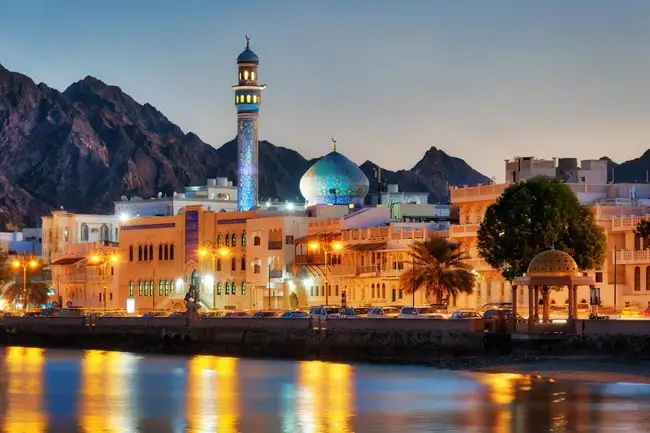
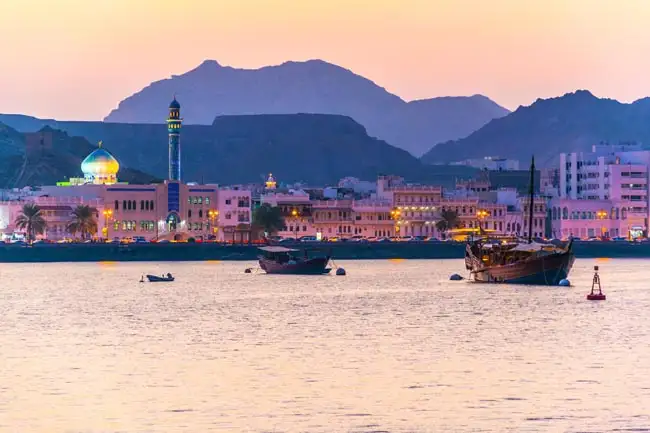
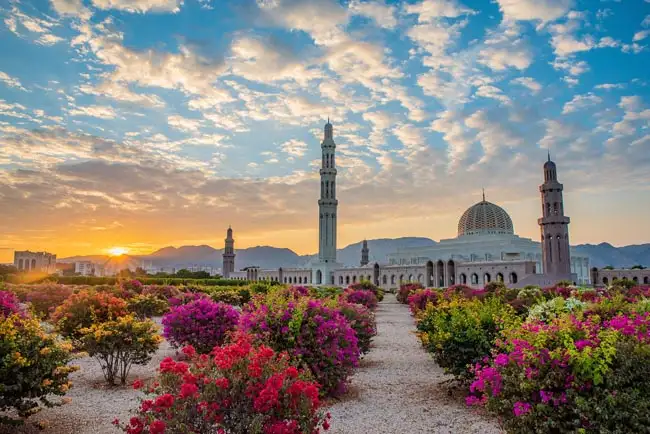
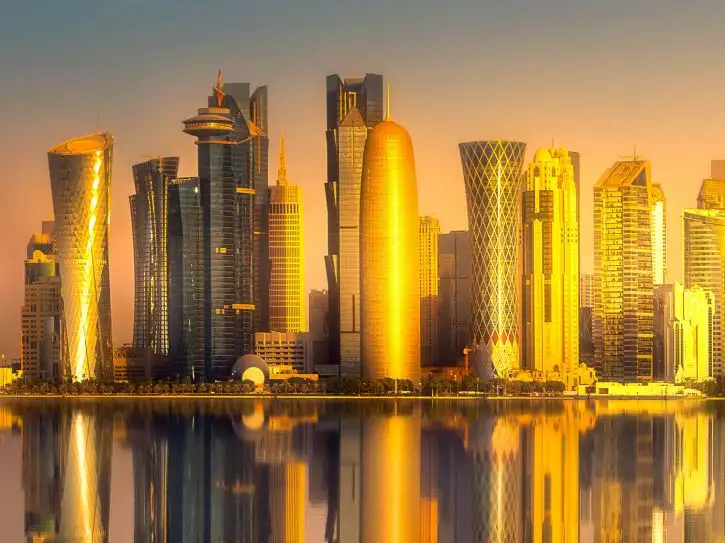
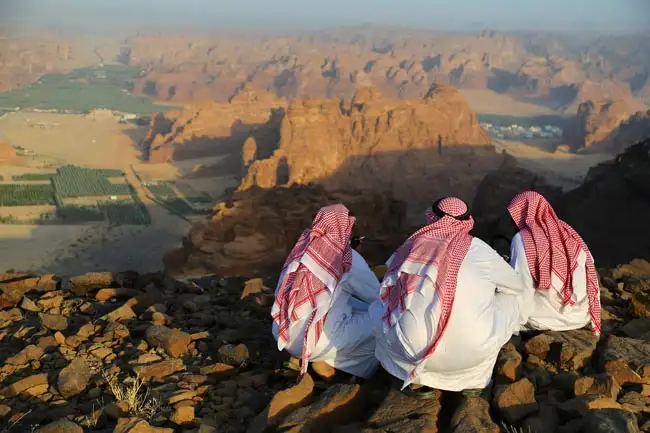
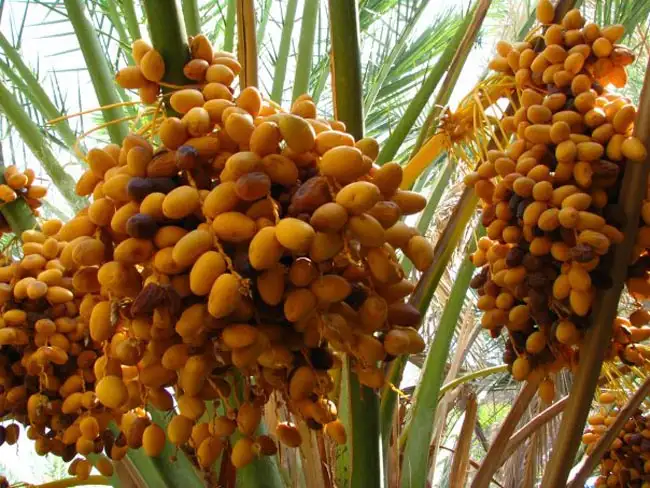
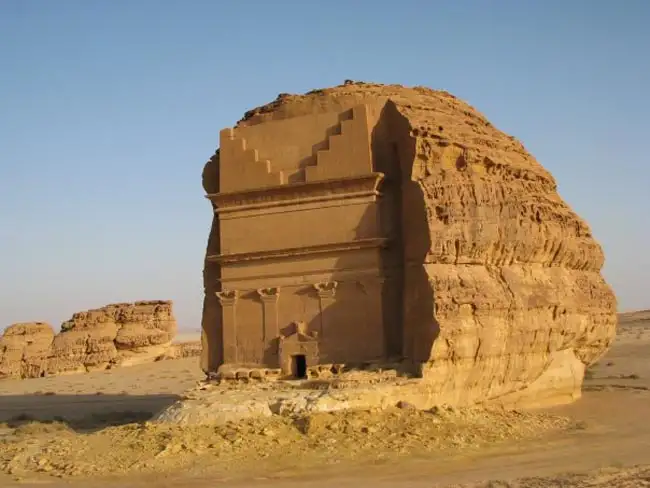
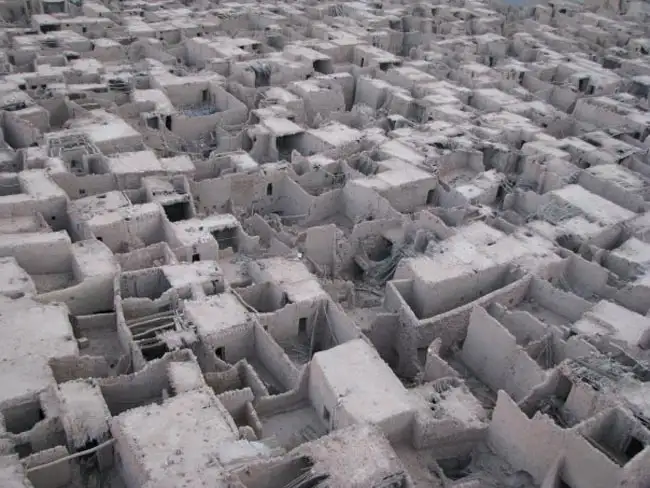
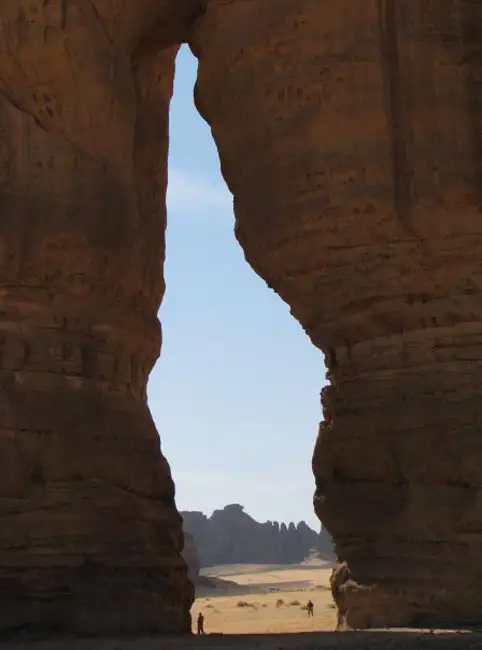
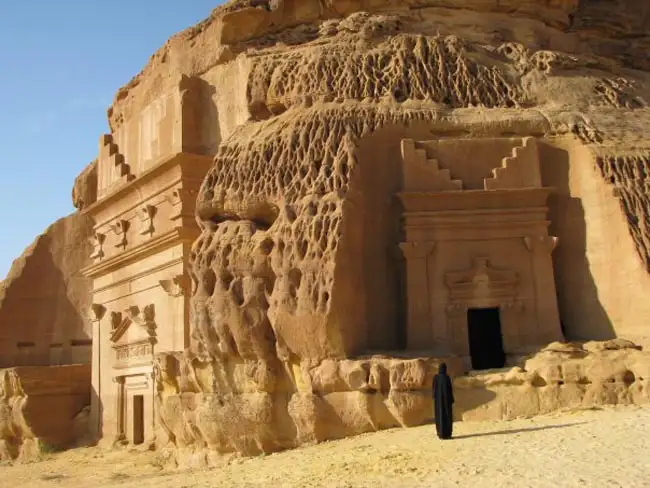
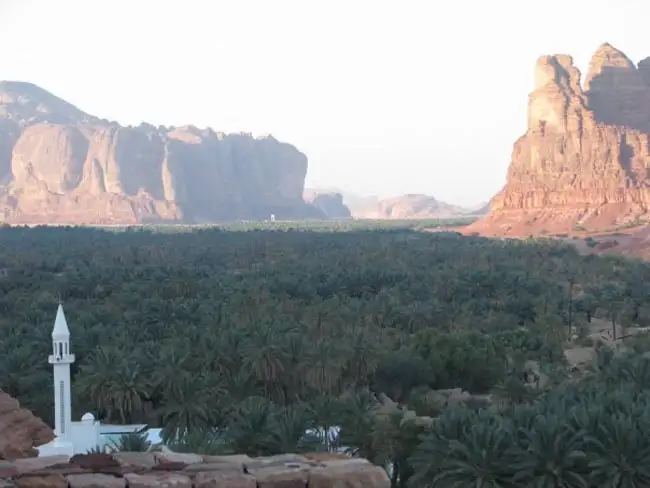
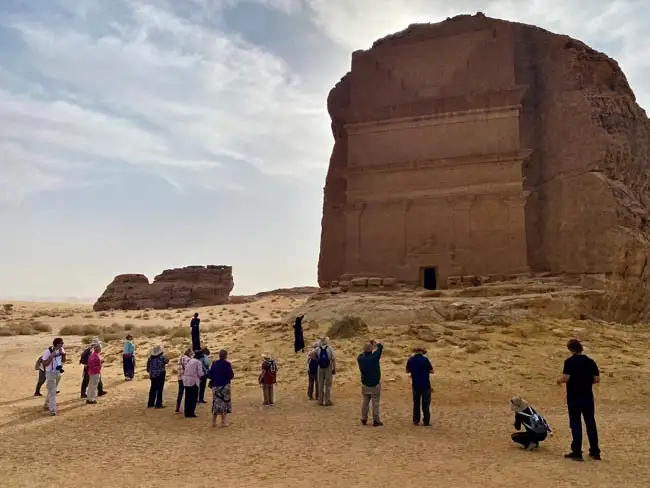
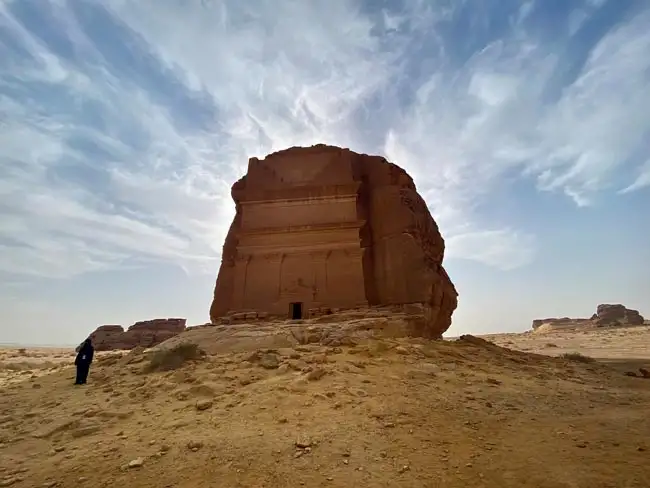
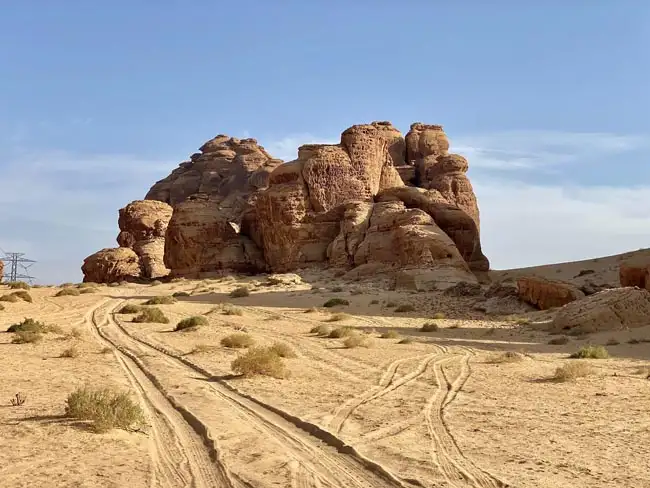
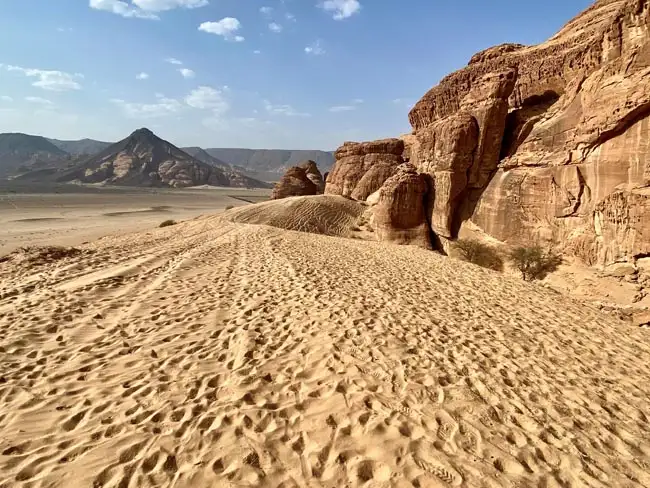
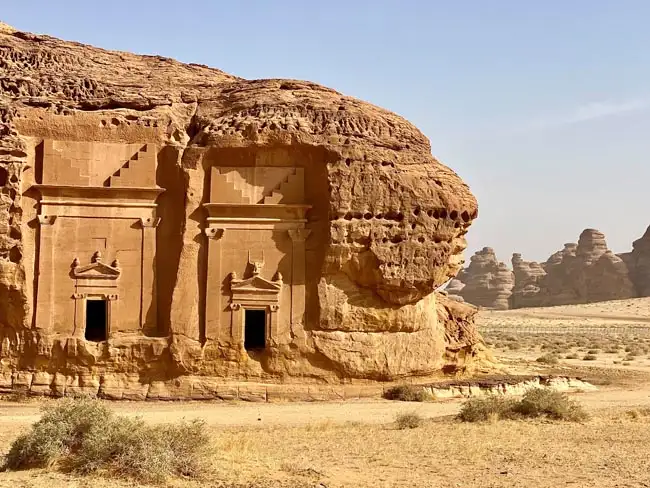
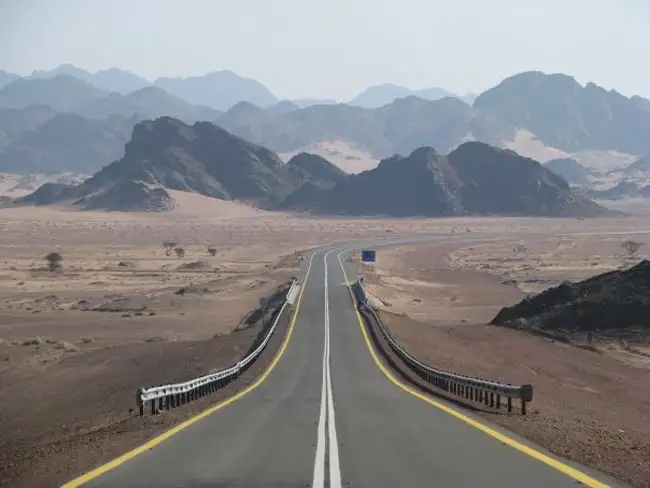
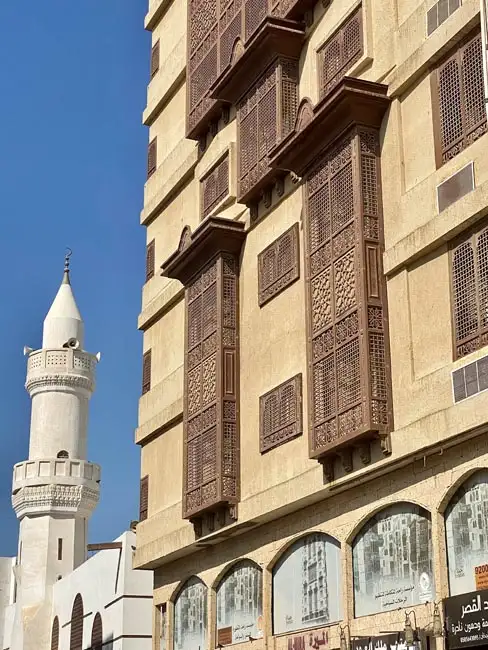
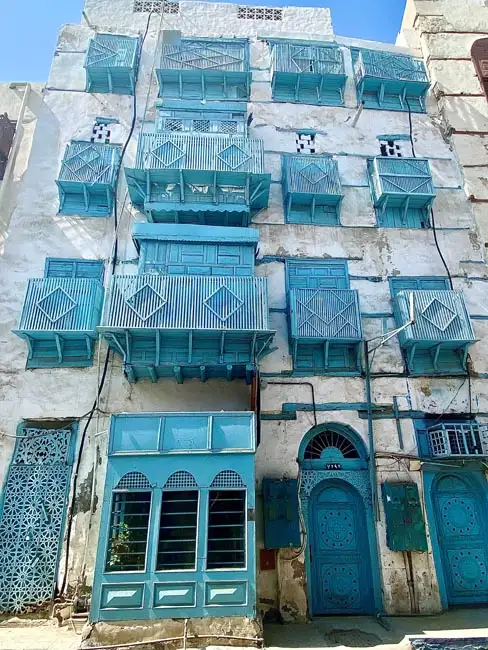
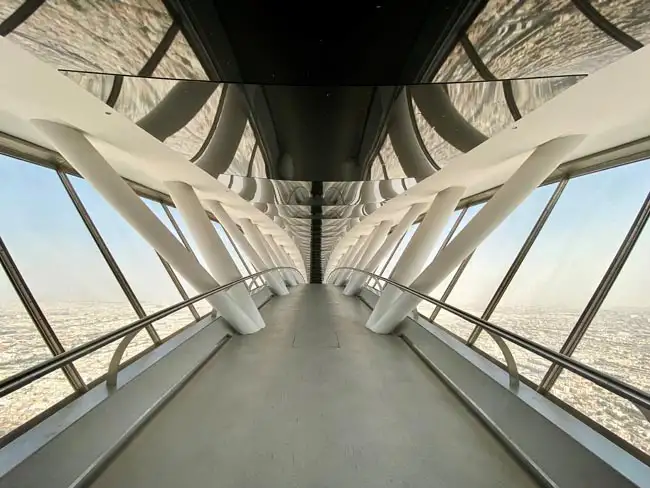
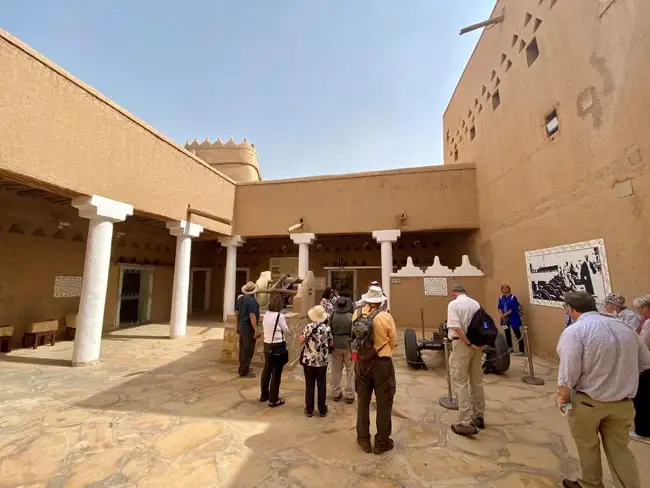
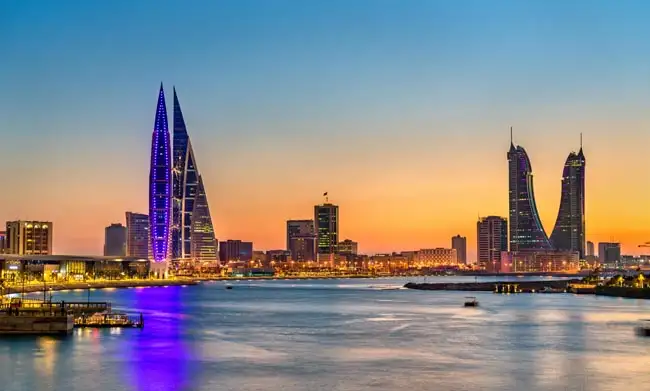
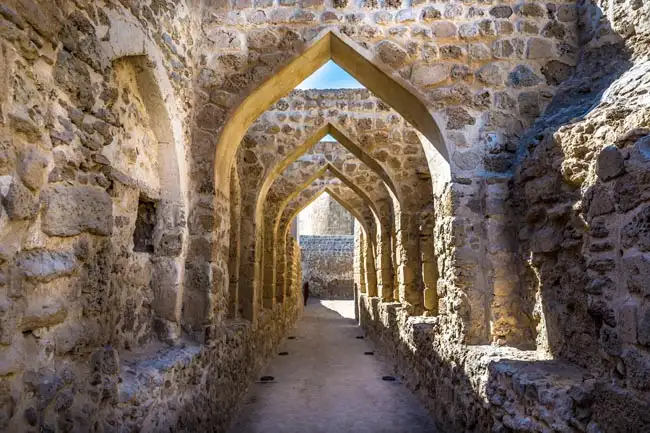
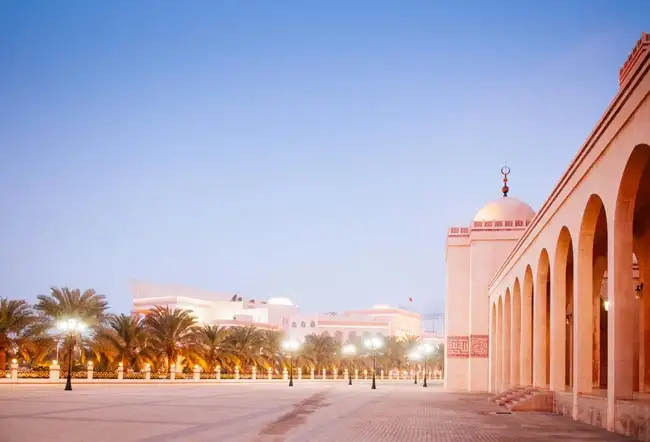
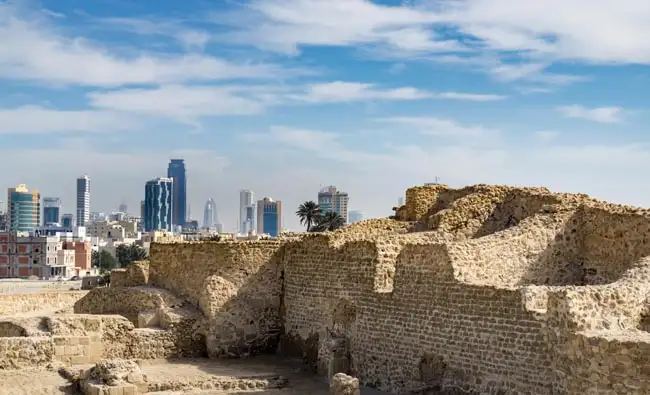
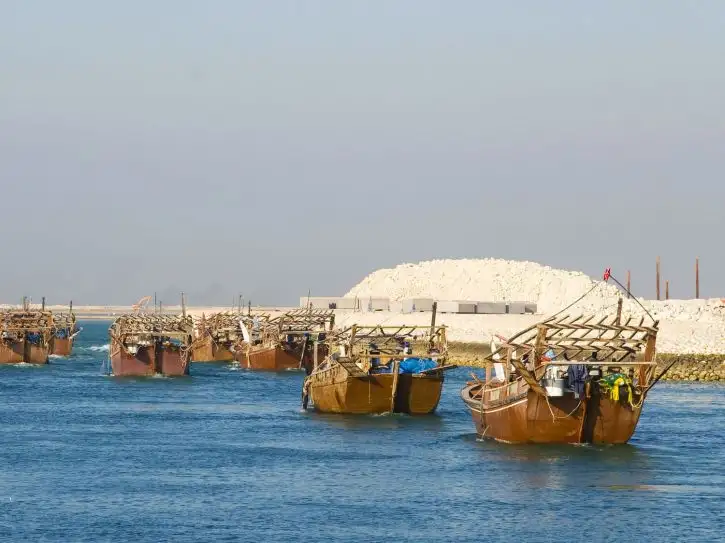
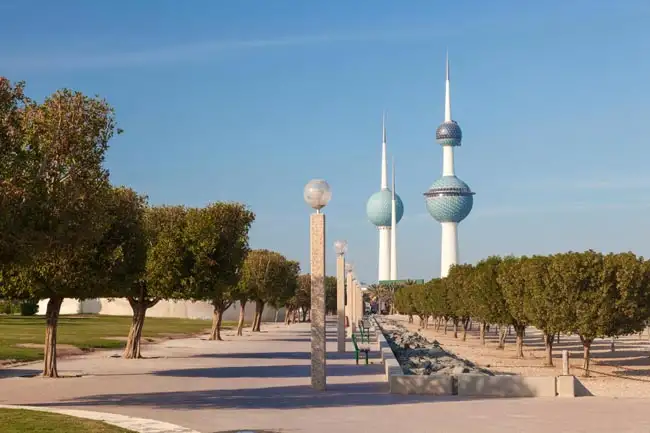
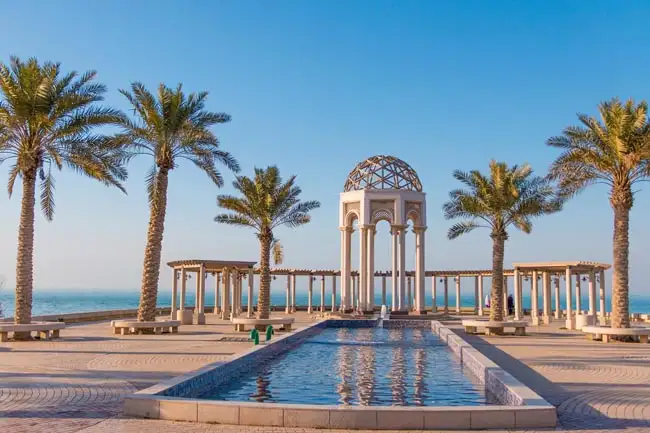
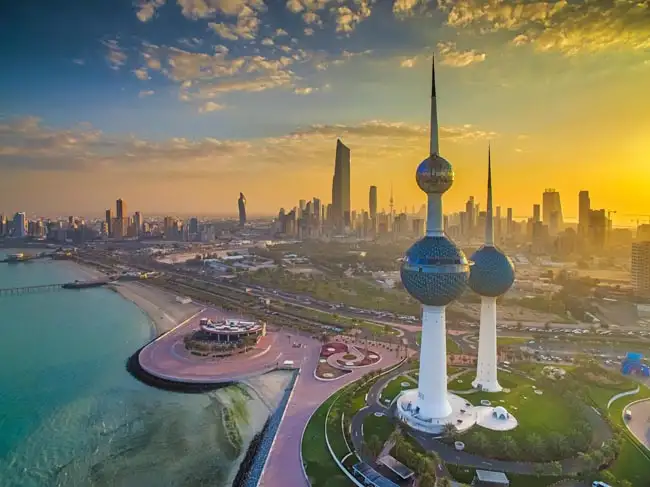
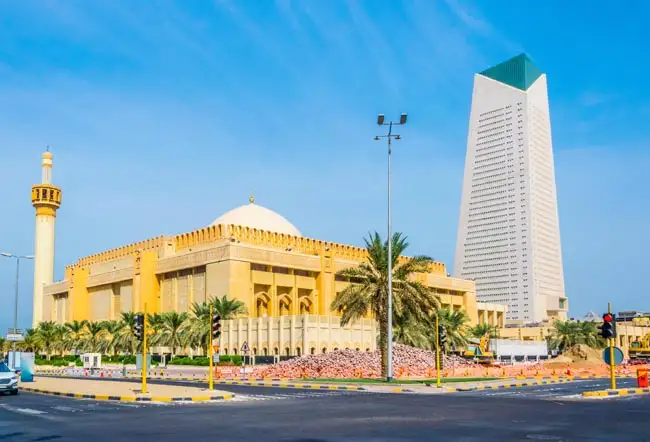

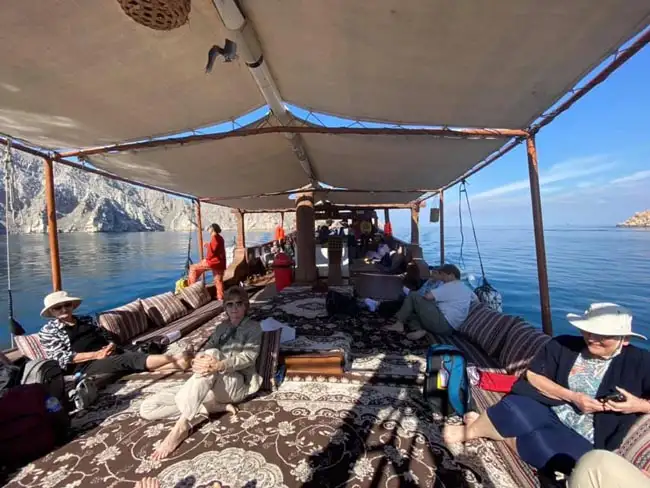
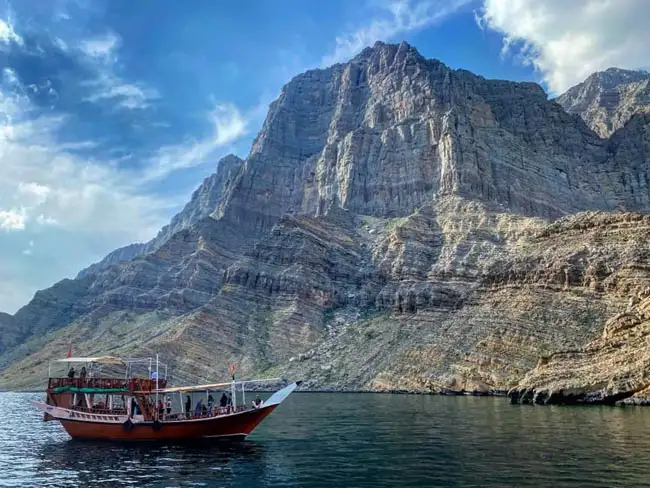
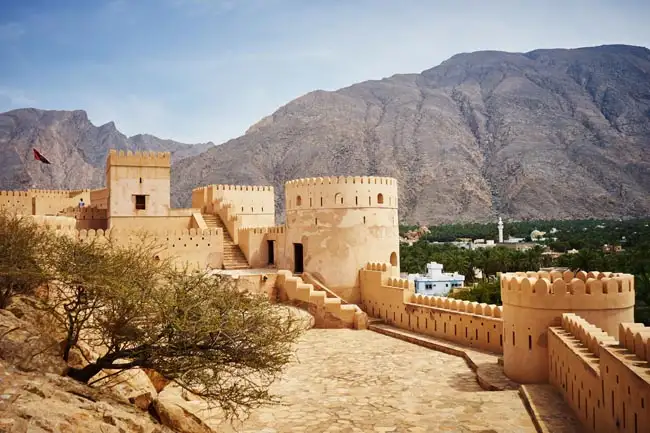
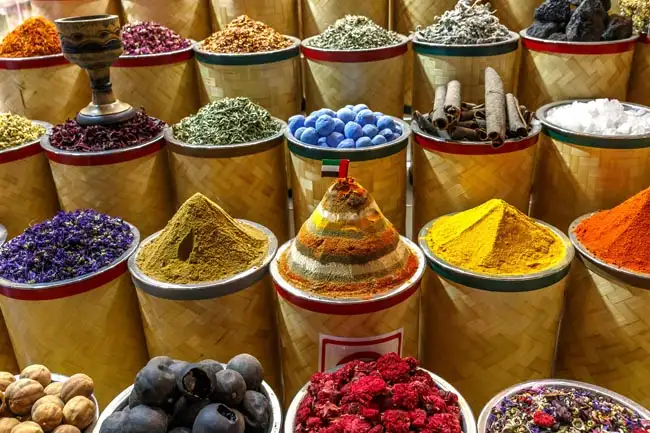
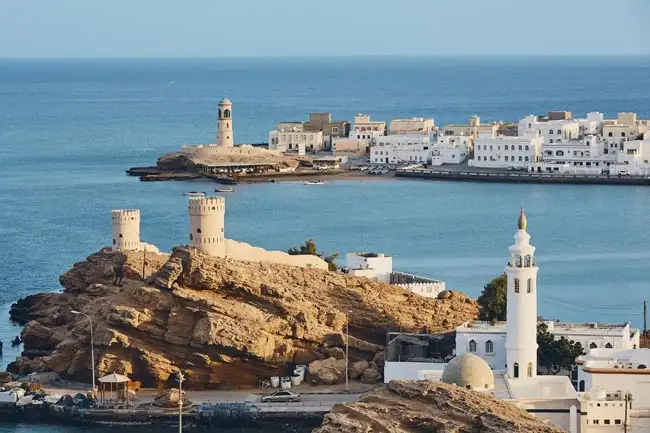
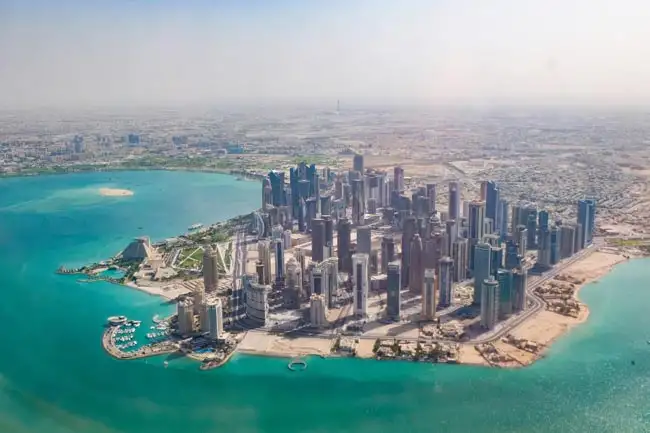
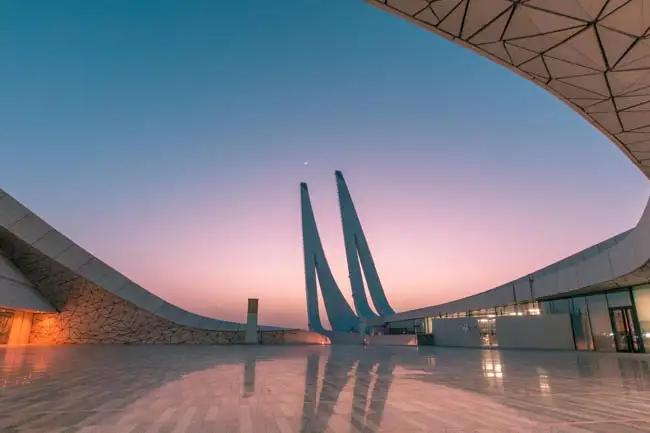
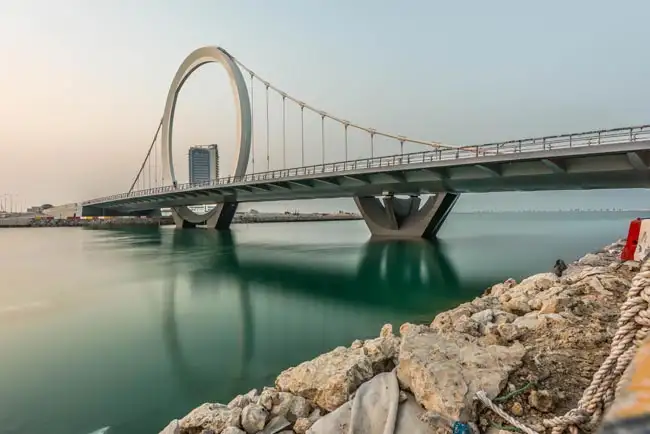
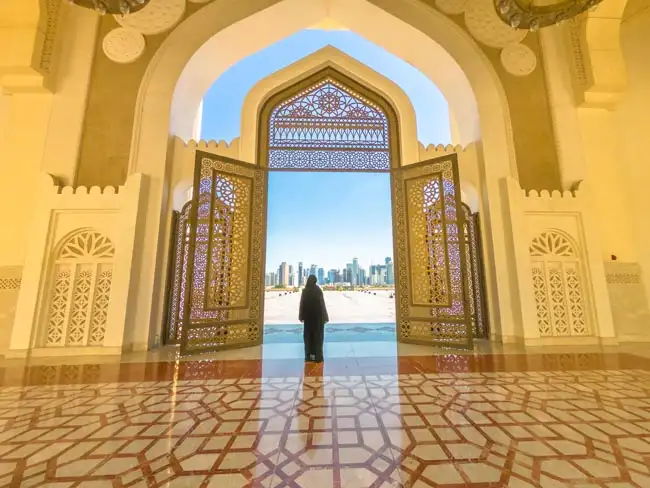
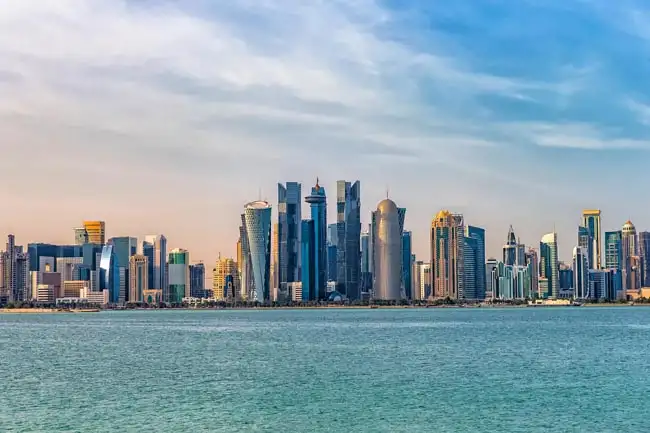
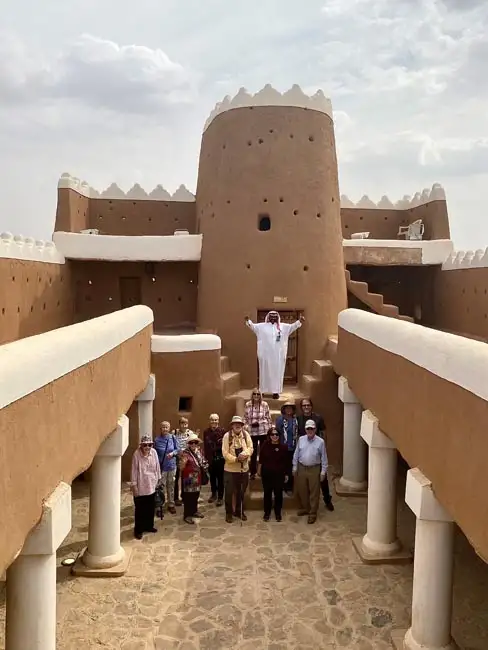
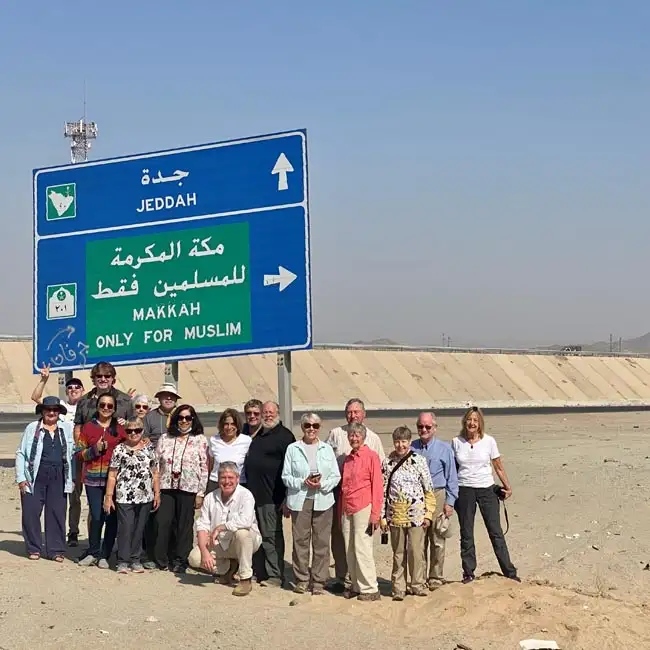
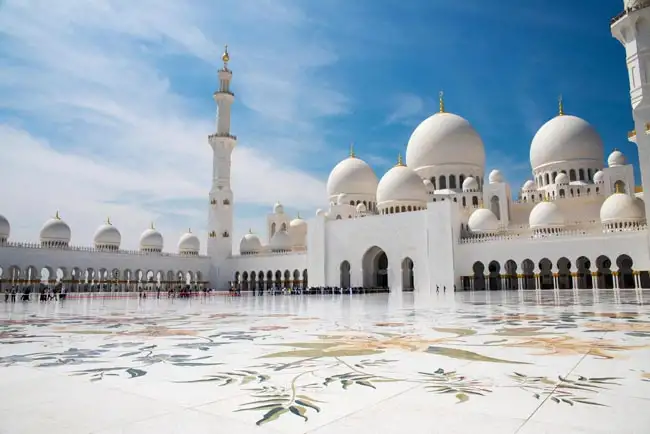
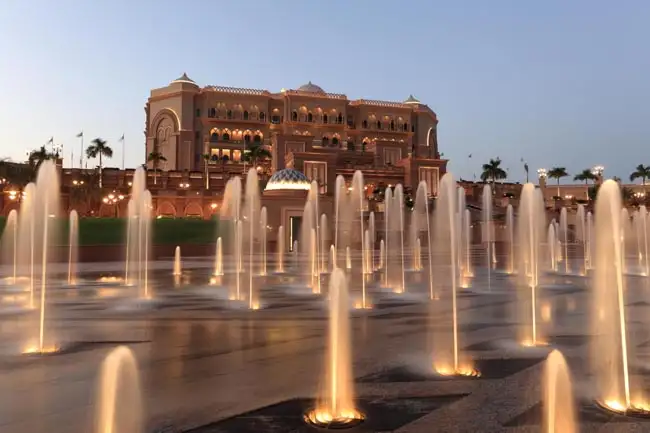
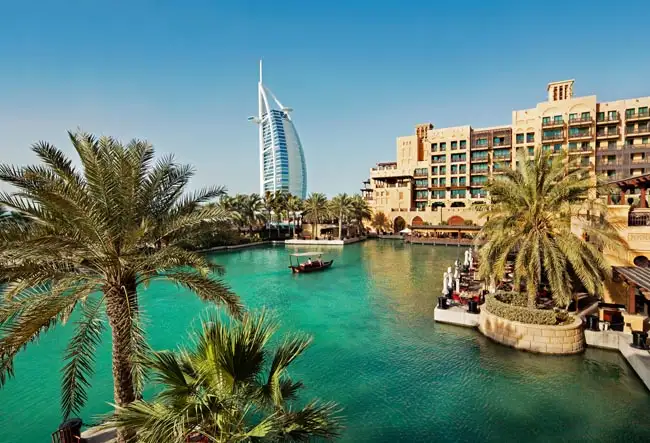
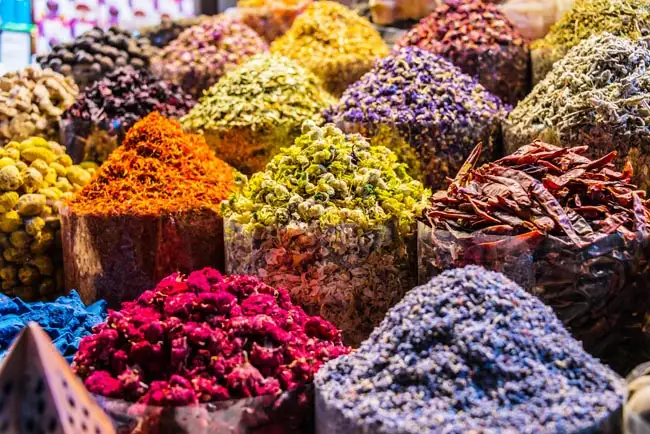
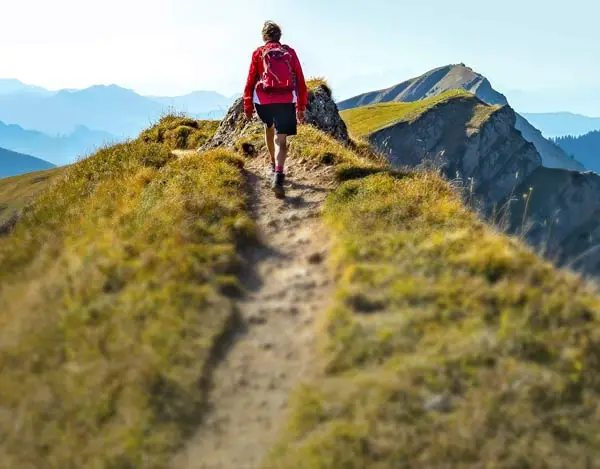
Book This Tour
- Final payment: Due 90 days prior to departure.
- Deposit: A non-refundable $1000 USD Deposit is required at booking.
- Internal Flight Taxes: An extra $385 USD applies for taxes and fees on tour flights. The internal airfares are included, but taxes are listed separately as they may change. Exceptions are noted in Red.
- Optional Single Supplement: $3760 USD (number of singles limited).
(View options forsingle travellers) - Transfering Tour or Date: Transferring to another tour or tour date is only permissible outside of 120 days prior to departure and is subject to a $100 USD change fee.
(Read our cancellation policy)
Prices below are per person, twin-sharing costs in US Dollars (USD). Pricing does not include airfare to/from the tour and any applicable taxes.
Tourcode: GS9
Frequently Asked Questions
- What is the maximum number of participants on a trip?Most of our tours carry a maximum of 18 participants; some tours (ie hiking tours) top out at 16. In the event that we do not achieve our minimum complement by our 90-day deadline, we may offer group members the option of paying a "small-group surcharge" as an alternative to cancellation. If all group members agree, we will confirm the trip at existing numbers; this surcharge is refundable in the event that we ultimately achieve our regular minimum. If the small group surcharge is not accepted, we will offer a refund of your deposit or a different trip of your choice.
- Can I extend my tour either at the beginning or end? What about stopovers?Yes, you can extend your tour either at the beginning or the end and we can book accommodation in our tour hotel. Stopovers are often permitted, depending on air routing. Stopovers usually carry a "stopover" fee levied by the airline.
- How do I make a reservation? How and when do I pay?The easiest way to make a reservation is via our website; during office hours, you are also more than welcome to contact us by telephone.
A non-refundable deposit is payable at the time of booking; if a reservation is made within 90 days, full payment is required. Some trips require a larger deposit. If international airline bookings require a non-refundable payment in order to secure space or the lowest available fare, we will require an increase in deposit equal to the cost of the ticket(s).
Early enrolment is always encouraged as group size is limited and some trips require greater preparation time.
Once we have received your deposit, we will confirm your space and send you a confirmation package containing your trip itinerary, any visa/travel permit related documents, invoice, clothing and equipment recommendations, general information on your destination(s), and forms for you to complete, sign and return to us. Your air e-tickets (if applicable), final hotel list, final trip itinerary, and instructions on how to join your tour, will be sent approximately 2-3 weeks prior to departure. - What about cancellations, refunds, and transfers?Please review our cancellation policy page for details.
- I am a single who prefers my own room. What is a single supplement?All of our tours have a single supplement for those who want to be guaranteed their own room at each location.
This supplement is a reflection of the fact that most hotels around the world do not discount the regular twin-share rate for a room by 50% for only one person occupying a room. Most hotels will give a break on the price, but usually in the range of 25-30% of the twin-share rate. This difference, multiplied by each night, amounts to the single supplement.
The conventional amount can also vary from country to country and some destinations are more expensive than others for single occupancy. In order to be "single friendly," the supplements we apply are not a profit centre for us and we do our best to keep them as reasonable as possible.
On most tours we limit the number of singles available, not to be punitive, but rather because many hotels allow for only a limited number of singles; some smaller hotels at remote locations also have a limited number of single rooms available.
Please note that most single rooms around the world are smaller than twin-share rooms and will likely have only one bed. - Do you have a shared accommodation program?Yes! If you are single traveller and are willing to share, we will do our best to pair you with a same-gender roommate. Please note that should we fail to pair you, we will absorb the single supplement fee and you will default to a single room at no extra charge.
